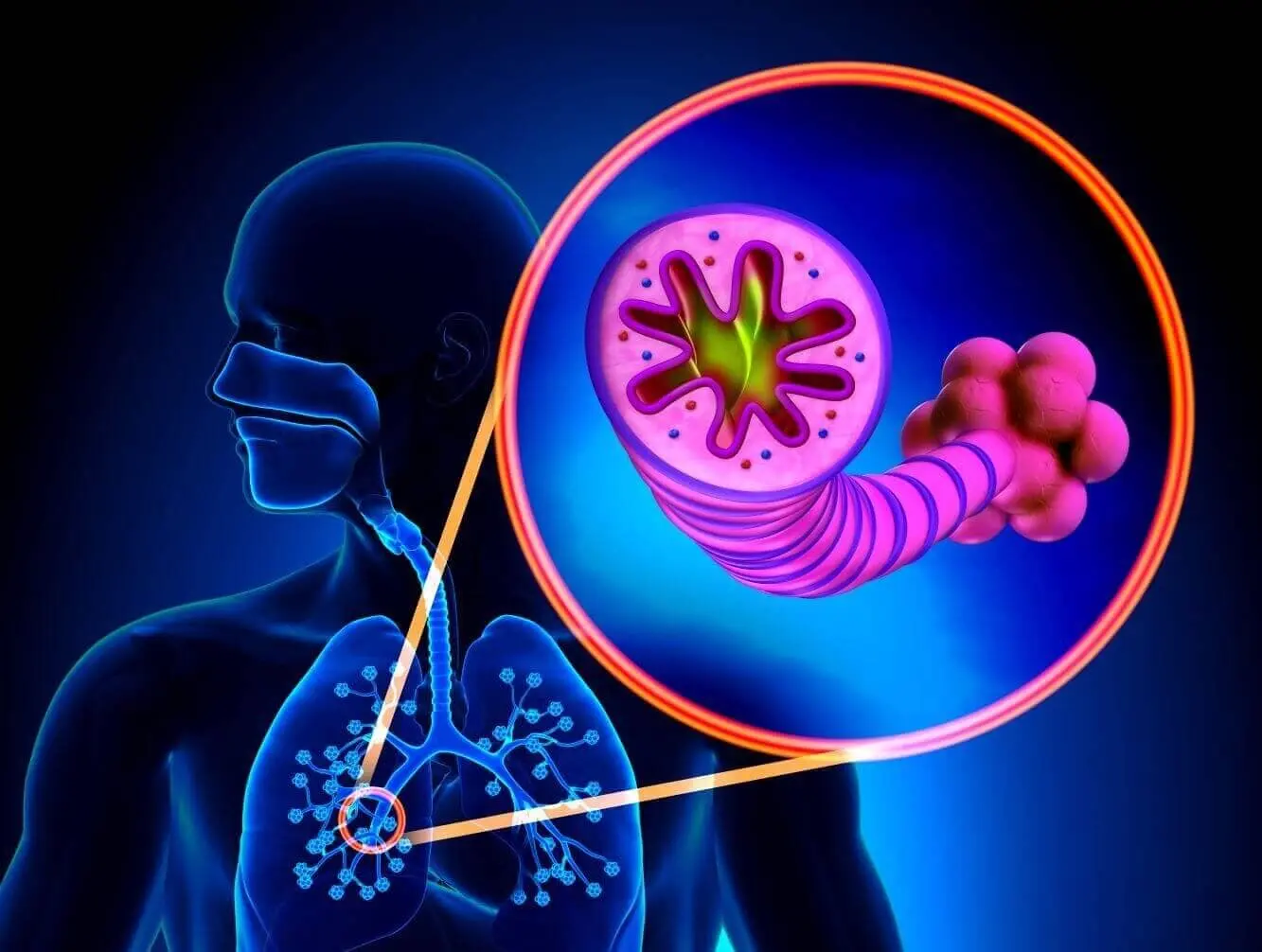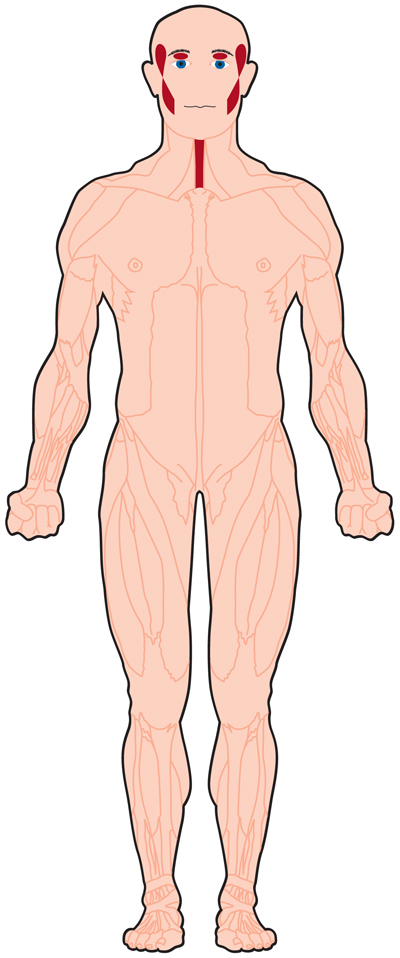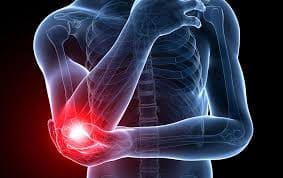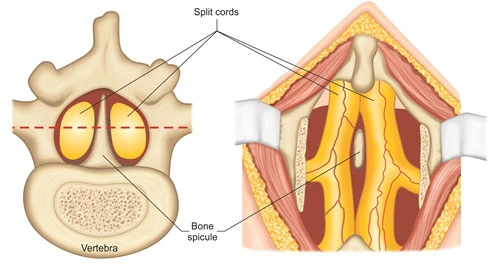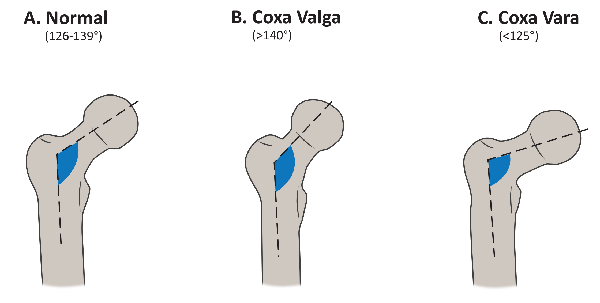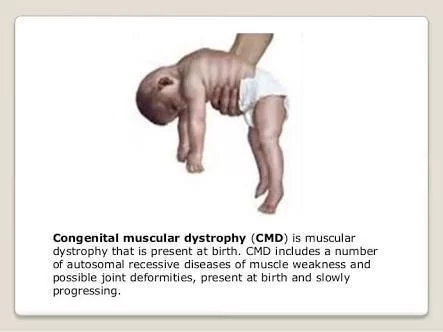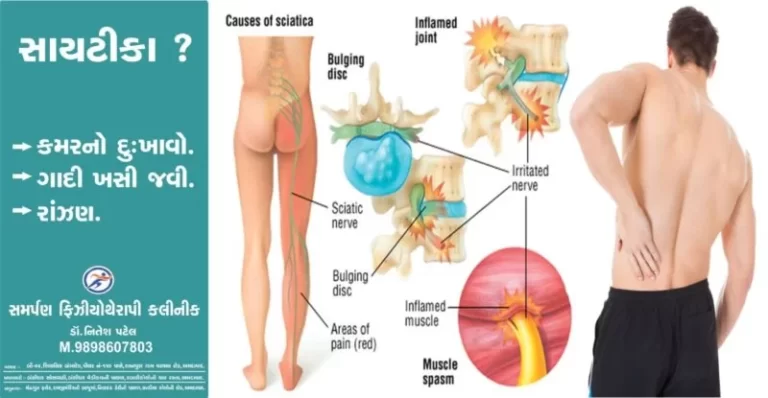Chronic Obstructive Pulmonary Disease (COPD)
What is Chronic Obstructive Pulmonary Disease (COPD)?
Chronic obstructive pulmonary disease, or COPD, is a disorder that makes breathing difficult by blocking airflow and damaging the lung’s other tissues.
Two primary conditions are referred to by the term COPD.
1 When there is damage to the walls separating several air sacs in the lungs, emphysema develops. These sacs are typically stretchy or elastic. Each sac of air expands with inhalation, resembling a tiny balloon. The air leaves as you exhale because the air sacs contract. The process of removing air from your body is more difficult for your lungs.
2 The lining of the airways becomes repeatedly irritated and inflamed, leading to chronic (long-term) bronchitis. It gets harder to breathe as the obstruction of the airways with dense.
Causes of Chronic Obstructive Pulmonary Disease (COPD)
Prolonged exposure to toxic chemicals or particles causes COPD. Worldwide, smoking cigarettes is the leading cause of COPD. Alpha-1 antitrypsin deficiency (AATD), exposure to the environment and at work, and secondhand smoke are possible causes.
Epidemiology
The majority of people with COPD are smokers and older adults. It is currently the third most prevalent cause of morbidity and death worldwide, and prevalence rises with age. In 2015, 174 million people globally had COPD, and the disease was responsible for almost 3.2 million deaths. However, because COPD is underdiagnosed, the prevalence is likely underestimated.
Symptoms of COPD
Breathing becomes more difficult with COPD. Initially, the symptoms could be minor, starting with breathlessness and frequent coughing. Breathing may become more challenging as the symptoms worsen and become more severe.
Early symptoms
The symptoms of COPD can be quite slight at first. They could be mistaken for a cold.
Early symptoms may of:
Occasional difficulty breathing, particularly after physical activity moderate but constant coughing frequent throat clearing, especially in the morning
You may begin to make small adjustments, such as avoiding stairs and skipping physical activity
Worsening symptoms
With time, symptoms could get worse and harder to ignore. When lung damage increases, you could feel like this:
breathlessness with even slight exercise, such as climbing stairs,
wheezing, or faster breathing, particularly during breathing out, and tightness in the chest
Pathophysiology
The pulmonary vasculature, lung parenchyma, and airways are all affected by COPD, an inflammatory disease. Protease-antiprotease imbalances and oxidative stress are believed to be involved in the process. Emphysema is the term used to characterize one of the structural abnormalities associated with COPD, which is the breakdown of the lungs’ gas-exchanging surfaces, or alveolar air sacs, resulting in obstructive physiology.
An irritant (like smoking) triggers an inflammatory reaction in those with emphysema. Upon recruitment, neutrophils and macrophages release a variety of inflammatory mediators. excess proteases and oxidants that cause the air sacs to rupture. while elastin is broken down by proteases, the resulting loss of elastic recoil causes the airway to compress while exhaling.
Diagnosis
Physical and History
The symptoms of COPD usually appear in maturity, usually in the winter. Patients typically complain of coughing up fluid, chronic dyspnea that worsens over time, and these symptoms. Patients may also experience tightness in the chest and wheezing. While the majority of cases have a history of smoking, many do not.
Inquire about their family history, and occupational and environmental exposures, including second-hand smoking exposure. It is important to investigate every night’s awakenings, the use of inhalers, and how the condition affects an individual’s level of activity when they have been diagnosed with COPD. Inquiring about a patient’s past medical history for conditions including asthma, allergies, and childhood respiratory infections is important
Evaluation
Patients with relevant symptoms and risk factors are frequently tested for COPD. Spirometry confirms the diagnosis. A 6-minute walk test, blood work, and radiographic imaging are possible significant tests.
Pulmonary function tests are important for the diagnosis, staging, and ongoing care of COPD. Both before and after giving an inhaled bronchodilator, spirometry is done. Short-acting beta2-agonists (SABA), short-acting anticholinergics, or a mix of the two can be used as inhaled bronchodilators.
The diagnosis of COPD is verified by a ratio of less than 0.7 between the forced expiratory volume in one second and the forced vital capacity (FEV1/FVC). Pulse oximetry or arterial blood gas analysis should be used to assess oxygenation in patients who have markedly decreased FEV1 and breathlessness symptoms.
A 6-minute walk test is frequently used to assess a patient’s below-the-maximum functional ability. This test is carried out on a level, straight surface indoors. The test assesses the patient’s walking distance for 6 minutes, with the hallway typically being 100 feet in length.
A complete blood count is frequently necessary for laboratory testing to check for polycythemia, anemia, and infections. It is important to assess alpha-1 antitrypsin levels for further COPD causes.
A computed tomography (CT) scan and a chest x-ray are examples of radiographic imaging. Chest X-rays could indicate increasing anterior-posterior diameter, flattening of the diaphragm, and hyperinflation. There may be a thickening of the bronchial wall in chronic bronchitis cases situations. When planning surgical operations or for patients with bronchiectasis or cancer, CT imaging may be helpful. Centrilobular emphysema in COPD patients will be detected by CT of the chest. There could be bullae in the subpleural spaces.
The diagnosis of COPD can be made without a biopsy. Histopathologic observations include a rise in lymphoid follicles, structural changes, and inflammatory cells.
Acute worsening of respiratory symptoms is known as an acute exacerbation of COPD. The model created by Anthonisen and colleagues, which categorizes severity based on the presence of worsening dyspnea and sputum volume, is frequently used to assess severity. One of these symptoms plus any one of the following—increased coughing, fever without any other explanation, upper respiratory infection within five days, or a rise in heart rate or respiratory rate from the patient’s baseline—defines a mild episode.
When two or all three symptoms are present, an exacerbation is classified as moderate or severe. Acute respiratory failure and clinical signs of hypercapnia and hypoxemia are possible in these patients. It is recommended to perform pulse oximetry, chest imaging, and arterial blood gas analysis.
Treatment of Chronic Obstructive Pulmonary Disease (COPD)
Medical treatment
The way beta2-agonists function is by causing the smooth muscle in the airways to relax. In therapy, long-acting beta2-agonists (LABA) and SABAs are frequently prescribed. SABAs are administered as needed to offer instant relief. Maintenance therapy is usually administered with LABAs.
Antimuscarinics function by blocking the smooth muscle‘s M3 muscarinic receptors, which stops bronchoconstriction. SABAs and other short-acting antimuscarinic drugs (SAMA) have a quick beginning of effect and are only used when necessary. As part of maintenance therapy, long-acting antimuscarinic drugs, or LAMAs, are used.
In maintenance therapy, methylxanthines are also used as an extra measure of reduction, typically following LABA or LAMA treatment. Methylxanthines function by creating a slight bronchodilation by relaxing the smooth muscle in the airways. While the exact mechanism of action is uncertain, suppression of phosphodiesterase (PDE) III and IV may be the cause. A common methylxanthine, theophylline has been proven to considerably enhance FEV1 when combined with salmeterol, as opposed to when salmeterol is administered alone.
LABAs and LAMAs are frequently used alongside inhaled corticosteroids to minimize inflammation. It has been shown that ICS and LABA together are more advantageous than either medication used separately. Patients and doctors should be informed that using an ICS increases the risk of pneumonia. Oral glucocorticoids can have a variety of negative effects and should not be used for a long period of time. Instead, these need to be saved for the treatment of sudden exacerbations.
Inhibiting the breakdown of intracellular cyclic AMP is how phosphodiesterase-4 inhibitors reduce inflammation. It has been demonstrated that roflumilast, a PDE4 inhibitor, reduces the frequency of exacerbations in patients with severe illness.
Azithromycin use may help COPD patients experience fewer exacerbations, according to recent research. Usually, a prescription of 500 mg three times a week or 250 mg per day of azithromycin is given for a year. Professionals should be careful because this procedure might encourage bacterial resistance. Additionally, patients should be watched for hearing loss and QTc prolongation.
Depending on the severity, acute exacerbations of COPD can be treated in an inpatient or outpatient setting. The part before this one covers severity assessment. In the outpatient situation, bronchodilators, corticosteroids, and antibiotics can be used to treat mild instances. Inpatient care is advised for moderate-to-severe cases. Hospitalized patients frequently need bronchodilators and oxygen therapy, which can be provided by a SABA with or without a SAMA. When a patient stabilizes and is prepared for discharge, long-acting bronchodilators are usually administered.
While intravenous corticosteroids have not been demonstrated to be more effective than oral corticosteroids and may even enhance side effects, oral corticosteroids may still be used. If a patient’s condition prevents them from taking corticosteroids orally, such as an aspiration risk or ongoing BiPAP medication, intravenous corticosteroids may be investigated. If a bacterial infection is suspected, antibiotics need to be taken into consideration. A nasal cannula or mechanical ventilation may be used as part of oxygen therapy, depending on how severe the exacerbation is.
Surgical intervention such as lung volume reduction surgery, lung transplantation, or bullectomy may be necessary in severe cases. When medical therapy alone is unable to control symptoms in severe situations, surgical intervention is needed and may even enhance the quality of life.
In all phases of COPD, pulmonary rehabilitation is recommended. It is a thorough approach that has been tailored for each patient and may include therapies including behavioral modifications, education, and exercise training. Its goal is to better the psychological and physical well-being of the patient.
Physiotherapy Treatment
COPD Therapy Goals
- to reduce the airflow blockage and remove extra bronchial secretion.
- To create a correlated breathing pattern
- To encourage calmness and improve the alignment of the body
- to increase neck, shoulder girdle, and thoracic mobility
- To boost one’s tolerance for exercise
- to promote an active and fulfilling lifestyle.
When treating COPD, breathing exercises should be administered correctly. Diaphragmatic breathing with relaxed expiration receives the attention most. It is best to breathe diaphragmatically, reducing upper chest movements and relaxing the shoulder girdle. The air circulation of these locations is taught by the expansion of basal lung segments.
When emphysematous bullae are present, prolonged expiration along with pursed lip breathing is prescribed as a treatment for COPD.
Adjusting Posture Both the movements of the lower chest and the maximum relaxation of the upper chest should be taught to the patient. The primary focus is on diaphragmatic breathing that is calm and purposeful. The patient shouldn’t be held with their head forward and shoulders rounded to maintain proper posture.
Shoulder girdle exercises are administered in addition to thoracic mobility exercises. To avoid fixed inspiration and kyphosis, perform free, intense exercise for the entire spine.
Trunk rotating with loose arm swinging in rotation for relaxation is a crucial COPD exercise while seated. It is also crucial to emphasize postural awareness to help the patient practice shoulder girdle retraction and lateral arm rotation.
These patients should be as active and mobile as possible. By practicing breathing control and progressively increasing the distances walked on flat surfaces, stairs, and hills, one can enhance their tolerance to exercise. Toward the end of their hospital stay, these patients may also receive a progressive exercise regimen, which should be followed at home.
Prognosis
The prognosis for COPD differs according to treatment compliance, which includes giving up smoking and avoiding other toxic gasses. The prognosis is usually worse for patients with other comorbidities (pulmonary hypertension, cardiovascular disease, lung cancer, etc.). Dyspnea and breathing restriction typically worsen over time.
One method for predicting the risk of death in COPD patients is the BODE (Body-Mass Index (BMI), airflow Obstruction, Dyspnea, and Exercise Capacity) index. Based on the following factors—FEV1% of expected, 6-minute walk distance, mMRC scale, and BMI—the BODE index is rated on a point scale of 1–10. The 4-year survival rate is then connected with the cumulative score.
Complications
- Heart hypertension
- The cor pulmonale
- Loss of weight
- Infections with bacteria
- Reactions harmful to glucocorticoids
Consultations
To manage COPD patients, a multidisciplinary team of medical specialists may consist of:
- Thoracic surgeon if surgery is necessary
- Palliative care
- Respiratory Therapist
Patients education
Patients should get the following information in order to stop or delay the course of COPD [1]:
- Quitting up smoking
- Stay clear of secondhand smoke.
- Minimize exposure to other dangerous substances
- The following is a list of typical environmental and occupational risks.
- Inorganic materials: silica, carbon dust, asbestos, beryllium, and chromium
- Organic materials: bacterial species, bird droppings, and thermophilic fungus
- coal stoves without a vent
- instruction on how to use an inhaler
- Teaching and reiterating the value of using an inhaler
- adherence to the follow-up
- Following the treatment plan
- Observation of worsening symptoms
- Rehabilitation of the lungs
Pearls and other issue
Chronic inflammatory lung disease (COPD) results in irreversible airflow limitation and tissue damage.
The risk factor most commonly seen in the world is smoking.
- Adults over 40 are most typically affected by COPD.
- Spirometry with a post-bronchodilator FEV1/FVC ratio < 0.7 is used to make the diagnosis.
- Patients need to stay away from smoking and other dangerous situations.
- It is advised that all COPD patients have an annual influenza immunization.
- Patients 65 years of age or older are advised to receive PCV13 and PPSV23 at least one year apart.
- For COPD patients under 65 with substantial concomitant diseases, PPSV23 is advised.
- Usually, pharmacologic therapy includes inhaling corticosteroids and bronchodilators.
- Acute exacerbations
- Pulmonary hypertension
- One of the most common side effects is bacterial pneumonia.
- Patients who match screening requirements and have a history of smoking need to have their lung cancer closely checked
Improving Team Results in Healthcare
Developing detailed patient-tailored treatment strategies and encouraging collaboration amongst healthcare professionals are necessary for improving healthcare outcomes for individuals with COPD. Primary care doctors, consultants, nurses, respiratory therapists, pharmacists, and rehabilitation specialists are examples of healthcare professionals.
Patients should be regularly informed about quitting smoking and motivated to follow their treatment schedules. Rehabilitating the lungs plays an important role in better results. It has been shown that rehabilitation enhances quality of life.
Conclusion
Lung damage caused by chronic obstructive pulmonary disease (COPD) cannot be repaired. You can, however, acquire symptom management skills. If you take the required actions to support your lung capacity and combat lung irritation, breathing will become easier. Your best chance of carrying on with the activities you enjoy is to receive treatment as soon as possible.
FAQ
What are the 3 causes of COPD?
The term “smoker’s disease” is frequently used to describe COPD, but if quitting smoking is one of the key risk factors, COPD can also strike non-smokers. Additional risk variables could be a history of respiratory illnesses as a child. exposure to smoke from wood- or coal-burning stoves.
What is the biggest risk for COPD?
The primary risk factor for COPD is smoking. Most COPD patients smoke or have smoked in the past. Smoking increases the risk of COPD in those with a family history of the illness.
How long do most COPD patients live?
With COPD, many patients will live into their 70s, 80s, or 90s. However, he notes that the likelihood increases if your condition is moderate and you don’t have any other health issues, such as diabetes or heart disease. Complications such as pneumonia or respiratory failure cause some people to pass away sooner than expected.
How is COPD diagnosed?
Spirometry is the primary test for COPD. COPD can be identified by Spirometry even before symptoms are apparent. To figure out the severity of your COPD and assist with choosing your treatment goals, your provider may also use the test results. One kind of lung function test called spirometry measures how much air you breath
What is the most comfortable position for COPD patients?
It is said that sleeping on your side will help you maintain open airways. You should also use a pillow to support your head. Not only is sleeping on your side the most pleasant position for someone with COPD, but it’s also the best position overall.
References
- What Is COPD? | NHLBI, NIH. (2023, October 25). NHLBI, NIH. https://www.nhlbi.nih.gov/health/copd
- Physiotherapy Treatment for COPD. (n.d.). https://www.physiotherapy-treatment.com/treatment-for-COPD.html
- Agarwal, A. K. (2023, August 7). Chronic Obstructive Pulmonary Disease. StatPearls – NCBI Bookshelf. https://www.ncbi.nlm.nih.gov/books/NBK559281/

